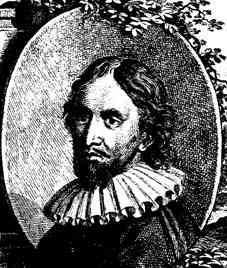Painters Francesco and Innocenzo Torriani
HISTORICAL SIGNS ABOUT THE PAINTER FRANCESCO TORRIANI (1612 - 1681)
He is the most influencial artist of the territory for what concerns ticinese painting of his age.
Other artists wanted success outside of their countries, but not Francesco Torriani.
His artistic quality was forged by Bologna painters and he also worked in Rome around 1639: according to some researcher instead, his artistic nurturing has to be considered "genovese" in relation to the economic and commercial contacts that Mendrisiotto had with Genoa.

We are certain of his return from Rome in 1640 to paint an altarpiece which represents the martyrdom of Sant‘Orsola, dated 1645, to be found in the Church of San Sisinio at Mendrisio. In 1647 he painted in the Chapel of the Rosary in the Church of the Immaculate at Morbio Inferiore. Both works are dated and signed by the artist.
Belongong to the influential Torriani family, more is known about the man then about the artist in him. We know him as an extremely wealthy and powerful man from 1640 to 1681, date of his death.
He also lent money and was even accused of being a scrooge.
He spent his life between Mendrisio and Como, were he passed away. His testament indicates that he lived the last years of his life with his son Innocenzo. This was a very shrend move that inabled him to abstain more orders although he had no economical needs.
He managed his shop as the true entrepreneur that he was and many other artists worked for him. Such as Facchinetti, Clericetti of Muggio, Bellasi and his son, who continued his father's pictorial tradition.
It's difficult to catalogue his work, because only the two cited ones are dated. Moreover some of them could habe been painted by others artists in his shop. It seems that some works were taken to England, but they were probably his son's works. On the paintings ordered by Count Porro from Como, two find themselves in the Riva San Vitale Parish Church, one represents Mary's Birth and the other her wedding.
At the time paintings were not necessarily signed since they were ordered by the purchaser who also indicated the theme and even had his name appear on the picture instead of the painter'a signature.
HIS SON FRANCESCO INNOCENZO TORRIANI (1649 - 1712)
Born in 1649 in Mendrisio. Dead in 1712 in Como. He contiunues his father's work.
He inherites more of the artistical side of his father than of his economical one.
He is better known as an artist rather than as a person. Contrary to his father, he is reserved, melancholic, and he is not a wordly man with no interest in material things. It is said in Como, that he lived dividing his time between three monasteries and that, though married with offspring, he was always accompanied by monks.
His painting shows none of his melancholy and the classicism of the time. His painting is a genovese baroque under the influence of Rubens, Piola, de Ferrari, which make way to the so called 17th hundred "barocchetto". Torrriani's work is solar, without light contrasts, elementes wich favour the genovese school rather than the bolognese one.
Reformers of the Ambrosian Accademy (late 17th hundred) such as the Buffi and the Abbiati establish a school wich follows the genovese style. Since Torriani was so close to Milan, he must have felt the tendency of his contemporanians.
A work signed and dated 1668 by him, named Virgin with Child, San Rocco and San Sebastiano is in the Church of San Giovanni at Mendrisio. Many other unsigned paintings were surely his. A large canvas in the presbitary of the Church Madonna dei Miracoli at Morbio Inferiore was originally attributed to a certain Gaffuri but is now identified as Torriani's work.
All of Torriani's characteristic are to be seen in this work. Some works Museum of Arts in Lugano.
Innocenzo is regarded to be more international than his father. Many of his signed oils are found in several Churches in the northern part of Switzerland, such as the Jesuits' Church at Luzern, the Monastery of Mariestein near Soletta. We have a photographic document af a lost painting that was ordered for Milano's Dome.
Sometimes historians have difficulity in distinguishing his paintings from his fathers'.
Both father and son are two milestones in the history of ticinese painting of the 16th hundreds because they founded a school in Canton Ticino. They were not to emigrate artistically thus creating an artistic language very much their own.
Their artistic roots were firmly planted in our territory.
The counter-reform and the ecclesiastic renewal in our country favored these artists. They received many orders without having to move elsewhere.
From a radio broadcast by
Prof.ssa Laura Cabrini Damiani